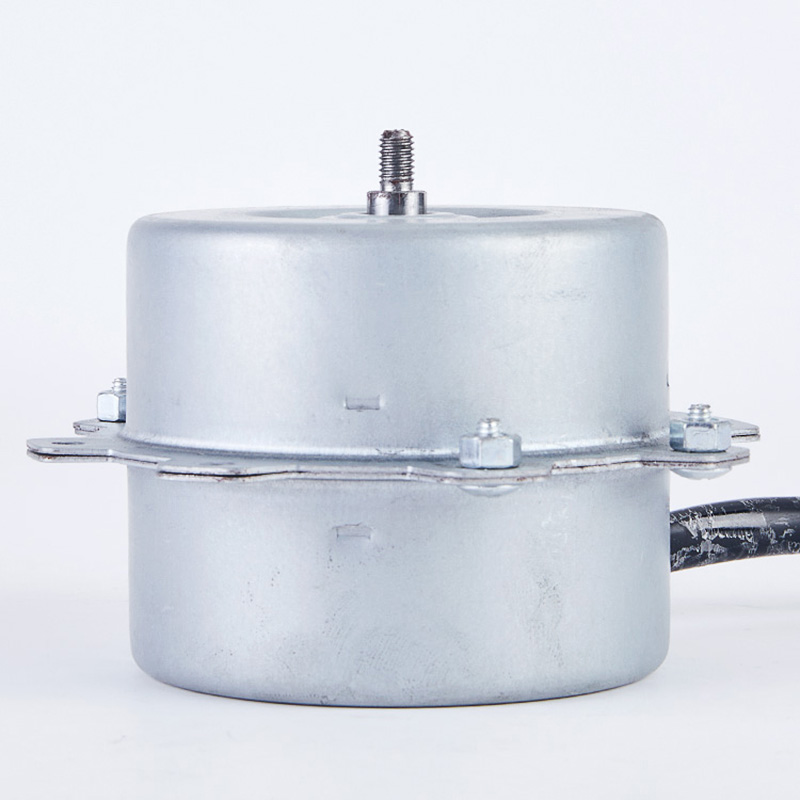As the “heart” of an air-conditioning system, the energy efficiency class of the air-conditioner motor not only directly affects the operating efficiency of the air conditioner but also exerts a profound impact on the overall performance of the equipment and the long-term usage costs for users. To answer this question, we need to analyze it from three aspects: the core definition of energy efficiency classes, the specific mechanism by which they influence air-conditioner performance, and the quantitative impact on user costs.
From the perspective of energy efficiency classification standards, currently, air-conditioner motors in China comply with the national standard GB 18613-2020 Minimum Allowable Values of Energy Efficiency and Energy Efficiency Classes for Electric Motors. This standard classifies motor energy efficiency into three levels: Level 1 (highest efficiency), Level 2 (medium-high efficiency), and Level 3 (entry-level). The core measurement indicator is the “Coefficient of Performance (COP)”, which is the ratio of the motor’s output power to its input electrical power. A higher ratio indicates stronger energy conversion efficiency. Taking a common 1.5-horsepower air-conditioner motor as an example, the COP value of a Level 1 energy efficiency motor is usually ≥ 4.5, that of a Level 2 motor ranges from approximately 3.9 to 4.4, and that of a Level 3 motor is below 3.9. This numerical difference serves as the key starting point for understanding how air-conditioner performance and costs are affected.
In terms of overall air-conditioner performance, the impact of the motor’s energy efficiency class is primarily reflected in three core dimensions. Firstly, cooling and heating speed: Level 1 energy efficiency motors have higher energy conversion efficiency, enabling them to drive compressors and fans to generate stronger heat exchange capacity within the same period. For instance, in a high-temperature environment of 30°C, a 1.5-horsepower air conditioner equipped with a Level 1 energy efficiency motor takes approximately 15%-20% less time to reach the set temperature of 26°C compared to a model with a Level 3 energy efficiency motor, eliminating the discomfort caused by long waiting times. Secondly, operational stability and noise control: High-efficiency motors feature more precise craftsmanship in core components such as coil windings and magnetic steel materials. During operation, they experience lower energy losses (e.g., copper loss, iron loss), which reduces heat generation and, in turn, minimizes vibration. As a result, their operating noise is typically 3-5 decibels lower than that of low-efficiency models. This is particularly beneficial for improving users’ sleep quality when the air conditioner is in night silent mode. Thirdly, environmental adaptability: Level 1 energy efficiency motors have a wider speed regulation range and can maintain stable output power even in extreme temperature environments (e.g., above 40°C in summer and below -5°C in winter). In contrast, Level 3 energy efficiency motors may experience issues such as frequent on-off cycles and reduced cooling/heating capacity due to excessive energy losses.
From the perspective of user costs, the difference in motor energy efficiency classes is mainly reflected in two aspects: initial purchase cost and long-term operating cost. In terms of initial cost, Level 1 energy efficiency motors have higher manufacturing costs, leading to a price difference of usually 800-1,500 yuan between air conditioners equipped with such motors and those with Level 3 energy efficiency motors. This is a major concern for some users when choosing low-efficiency models. However, in terms of long-term operating costs, the energy-saving advantage of high-efficiency motors will gradually offset the initial price difference. Based on China’s average residential electricity price of 0.56 yuan per kWh and an annual air-conditioner usage time of 1,200 hours, a 1.5-horsepower air conditioner with Level 1 energy efficiency consumes approximately 600 kWh of electricity annually, resulting in an annual electricity cost of 336 yuan. In contrast, a Level 3 energy efficiency air conditioner consumes about 900 kWh per year, with an annual electricity cost of 504 yuan. The annual cost difference between the two is 168 yuan. Calculated based on the average service life of an air conditioner (10 years), a Level 1 energy efficiency model can save 1,680 yuan in electricity costs, which far exceeds the initial price difference. Moreover, the longer the usage time, the more significant the energy-saving benefits. Additionally, some regions offer subsidies for high-efficiency and energy-saving home appliances, further reducing the initial purchase cost of Level 1 energy efficiency air conditioners and enhancing their cost-effectiveness.
In summary, the energy efficiency class of air-conditioner motors determines the overall performance of the air conditioner by influencing its cooling/heating speed, operational stability, and environmental adaptability. Meanwhile, the difference in energy efficiency creates a “short-term investment, long-term gain” pattern in terms of initial costs and long-term electricity expenses, providing a key reference for users’ purchasing decisions. In the current context of energy scarcity and increasing environmental awareness, choosing air-conditioner motors with high energy efficiency classes not only improves users’ experience but also aligns with the social development trend of energy conservation and emission reduction.




